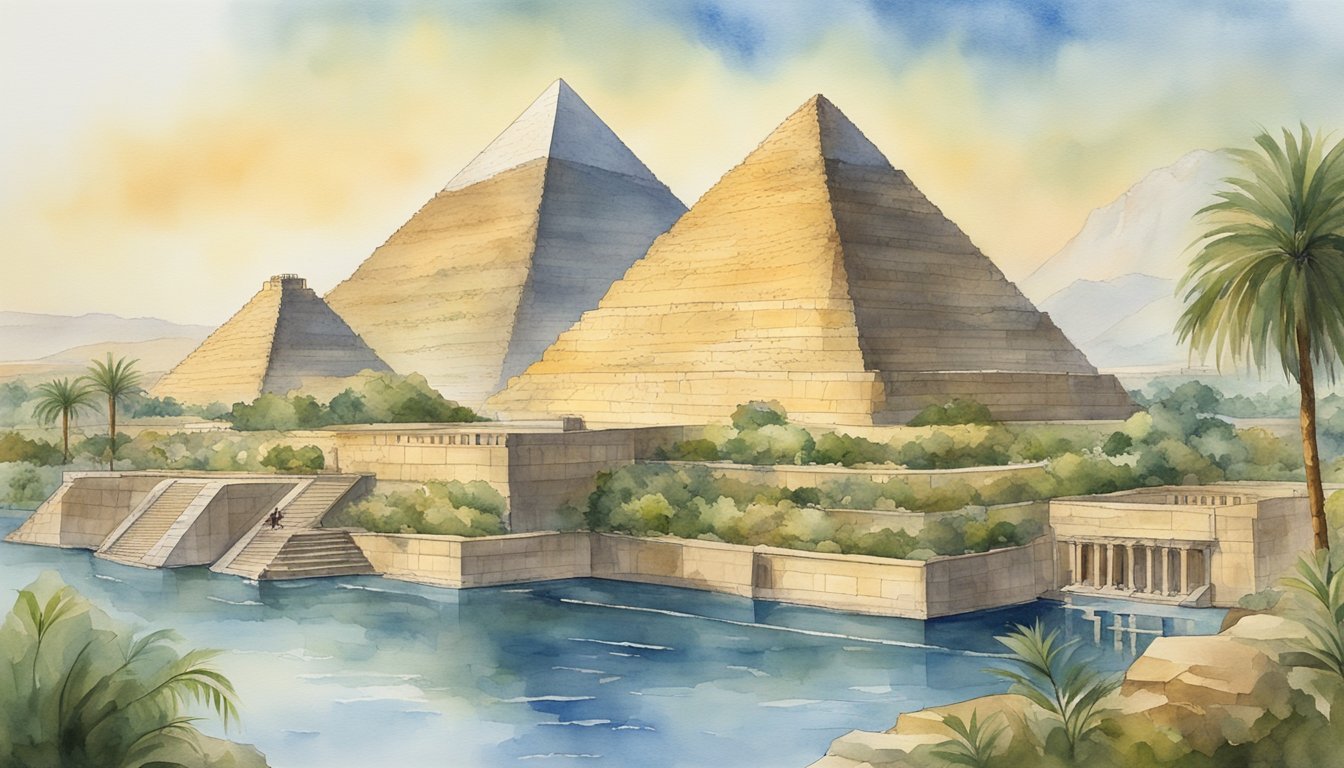Origins and Reconstructions
Historical Context
The Seven Wonders of the Ancient World were a collection of remarkable structures that showcased the remarkable architectural achievements of the ancient civilizations. These wonders were spread across the Mediterranean and Western Asian regions, which formed the cradle of the ancient world. They were awe-inspiring structures, admired not only for their beauty but also for their engineering prowess.
Contributors and Chroniclers
Several ancient writers contributed to the chronicling of these magnificent structures. The initial list was compiled by Philo of Byzantium in 225 B.C., with his work titled “On The Seven Wonders.” Other renowned ancient writers such as Herodotus, Callimachus of Cyrene, Diodorus Siculus, and Strabo also wrote about these marvels. In addition, Antipater of Sidon, a Greek poet, and traveler, penned a famous poem in the Greek Anthology, praising these extraordinary structures.
Destruction and Ruin
Unfortunately, most of the Seven Wonders of the Ancient World were destroyed by various causes:
- The Great Pyramid of Giza: The only existing wonder today, though weathered and partially eroded.
- Hanging Gardens of Babylon: Believed to have been destroyed by earthquakes, but their existence remains a matter of debate.
- Temple of Artemis: Destroyed by fire during a raid by the Goths in 268 A.D. and later rebuilt but subsequently destroyed by earthquakes.
- Statue of Zeus at Olympia: Probably destroyed by an earthquake or a fire.
- Mausoleum at Halicarnassus: Dismantled by earthquakes and reused for other structures in the area.
- Colossus of Rhodes: Toppled by an earthquake around 226 B.C.
- Lighthouse of Alexandria: Gradually fell into ruin due to a series of earthquakes between the 10th and 14th centuries.
Reconstructions of these Seven Wonders have been attempted based on archaeological evidence, ancient descriptions, and depictions. Through these efforts, historians and enthusiasts can get a glimpse of what these magnificent structures might have looked like in their prime.
Travel guides from the ancient world, such as those written by Hellenic travelers, provided invaluable insights into the structures. During the Middle Ages, historians like Bede continued to compile their own lists, preserving the legacy of the Seven Wonders of the Ancient World for posterity.
Individual Wonders and Legacies

Great Pyramid of Giza
The Great Pyramid of Giza, built for the Egyptian Pharaoh Khufu (also known as Cheops), remains largely intact after 4,500 years, making it the oldest and most complete of the ancient wonders. Its construction primarily involved stone blocks and its enormous size, encompassing 2.3 million blocks, showcases the incredible engineering and architectural skills of the ancient Egyptian civilization.
Hanging Gardens of Babylon
Commissioned by King Nebuchadnezzar II of Babylonia, the Hanging Gardens of Babylon were constructed to imitate the lush green hills of his queen’s homeland. While their exact location remains unknown, it is believed they were in present-day Iraq. The gardens were said to feature a complex irrigation system, exotic flowers, and fruit.
Statue of Zeus at Olympia
The Statue of Zeus at Olympia signified Greek worship and was housed inside the Temple of Zeus. Crafted by Athenian sculptor Phidias, the statue depicted the god Zeus seated on a massive throne. It was later destroyed in Constantinople, but a replica of Zeus’s head can be seen at the British Museum.
Temple of Artemis at Ephesus
The Temple of Artemis in Ephesus (located in modern-day Turkey) was dedicated to the Greek goddess Artemis. It featured 127 columns and housed sculptures and paintings that showcased the opulence of the ancient Mediterranean world. Destructions and reconstructions occurred over the centuries, but the temple’s ruins can still be visited today.
Mausoleum at Halicarnassus
Located in modern-day Turkey, the Mausoleum at Halicarnassus served as the tomb of Mausolus, a Persian satrap, and his wife Artemisia. The tomb was adorned with intricate carvings and sculptures, including one by the famous Macedonian artist Amtis of Media. While most of the mausoleum’s remains have vanished, its name survives as a term used to describe grand funerary monuments.
Colossus of Rhodes
The Colossus of Rhodes was a towering statue of the Greek sun god Helios, built by the sculptor Chares of Lindos. The statue stood at the harbor entrance and was erected to celebrate Rhodes’ victory over a siege. It quickly became a symbol of the city’s resilience. An earthquake eventually toppled the Colossus, but its ruins continued to attract visitors for centuries.
Lighthouse of Alexandria
The Lighthouse of Alexandria, also known as Pharos, was built on a small island in the Mediterranean Sea. As one of the most advanced technological achievements of the Hellenistic Age, it guided mariners to the city of Alexandria using a clever system of mirrors. The earthquake that hit Alexandria in the 14th century destroyed this ancient marvel, and its remains were eventually used for the construction of the 15th century Qaitbay Citadel.

